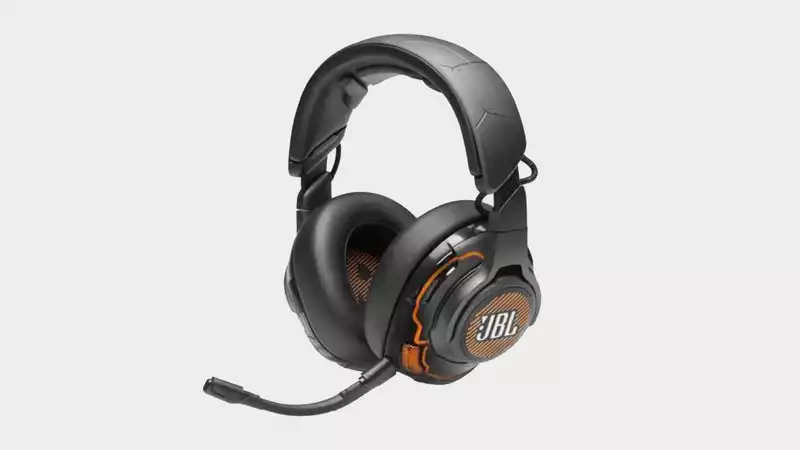One of the more important announcements at CES 2020 (which honestly feels like a million years ago at this point) was that JBL will join the ranks of other high-end gaming headset manufacturers and release its own line of PC gaming headsets and speakers. I have been spending some quality time with the Quantum One, the flagship headset in the JBL Quantum series, over the past few weeks.
What sets the Quantum One apart from other Quantum series headsets is its spatial acoustic treatment. When calibrated with a special microphone, the proprietary Quantum Sphere 360 technology uses built-in head tracking and custom algorithms to create surround sound effects.
JBL's Quantum Engine software does a good enough job as an easy-to-use source for customizing EQ, lighting the headset, and more importantly, setting the Quantum Sphere 360 surround sound. However, we found that a few more steps are required than just flipping a switch.
First, you need to adjust the headset to your height. Next, you need to insert special earplugs that measure your ear canal and optimally match the sound to the shape of your unique ear canal. This process took only a few minutes and had to be done with each new firmware update, even during pre-release.
Thankfully, calibrating the head tracker is a bit easier, but I found that I needed to recalibrate it every few days when the surround sound seemed a bit off. The fact that there is a button on the headset to calibrate the head tracking suggests that this sound drift is probably a more common problem that needs to be addressed. Sometimes it was easier to turn it off when listening to music.
Compared to DTS (also available on the wireless Quantum 800), the Quantum Sphere 360 sounded fuller and more balanced when listening to music (when it is working well). When listening to artists like Future or Travis Scott, I often listen to bass-heavy music, so it's nice to feel the bass creeping up behind me. Right now I'm into Spotify's all-night playlist, which plays a lot of electronic and trap beats. It's a strange feeling to be surrounded by music while working, a sort of catharsis.
The Audeze Mobius and its derivative, the HyperX Cloud Orbit S, are the best headsets with 3D head tracking, but this is a close second. We ran into some issues with the music sounding far away and the balance being disturbed.
The fix was, again, recalibration; JBL will release a firmware update upon launch that should address some of these issues.
The Quantum One shines in shooters. Lately I've been playing Call of Duty: Warzone and Apex Legends, both games where deciphering where the gunfire and footsteps are coming from is crucial to surviving and earning Ws. Running around frantically listening for footsteps adds to the tension at the end of the game. I also played "Resident Evil 3 Remake" and the stressful encounters are heightened even more as Nemesis' murderous footsteps are slowly closing in.
If you are a competitive gamer and don't need bells and whistles, you might opt for a lighter wireless headset with a superior microphone. This gaming headset feels like it is designed to separate you from the world. Frankly, it's just what I've needed for the past few weeks.
On the design front, JBL really went for it, and the RGB lighting circuit board design took me a while to figure out, as I'm always apprehensive about excessive lighting in general. A feature that worked well is TalkThru, which lowers the background sound enough to allow me to chat with friends on Discord.
All buttons are located on the left ear cup, including the volume wheel, ANC, TalkThru, and mute. I wish the button placement was a little lower.
The removable boom mic works fine. But, oh well; for $300, I'd want a better mic than that. I recorded some lines to see how it compares to other headsets and microphones I've tested this year. As you can see, my voice sounds clear, but a little tinny compared to other headsets; while playing Apex Legends, my teammates had no problem hearing me call out. Right now, however, the gold standard for detachable mics is clearly the Corsair Virtuoso RGB Wireless SE.
While $300 is a big ask for a gaming headset that isn't wireless and doesn't have audiophile-quality drivers, its sound and build, especially the Quantum Sphere 360 surround sound, when it works, really sucks you in, no matter what you're playing.
Even with the shortcomings of JBL's proprietary technology, the Quantum One delivers rich, crisp gaming audio, easy-to-use software, and overall excellent build quality. as JBL's first attempt at a gaming headset, the Quantum One leads the pack. great headset to lead the pack. But it really is just right.
.

Comments